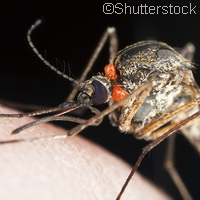Malaria and the cloak of invisibility
An international team of scientists has discovered a key molecule that helps the malaria parasite evade the human body's immune system. Partially funded by the EU-backed EVIMALAR ('Towards the establishment of a permanent European virtual institute dedicated to malaria research') project and presented in the journal Cell Host & Microbe, the findings of this study could provide fresh insight into how the parasite that triggers disease can dodge the defences built by the immune system. EVIMALAR, meanwhile, is funded under the Health Theme of the EU's Seventh Framework Programme (FP7) to the tune of EUR 12 million. Led by the Australia-based Walter and Eliza Hall Institute of Medical Research, researchers from Australia, Japan, the Netherlands and the United Kingdom identified how this crucial molecule is behind the 'invisibility cloak' the parasite uses to hide from the body's defence mechanism. This molecule also helps the parasites' offspring to remember how to 'produce' the cloak. Professor Alan Cowman from the Infection and Immunity division of the Walter and Eliza Hall Institute of Medical Research and his team found the molecule that controls the genetic expression of PfEMP1 (Plasmodium falciparum erythrocyte membrane protein 1), a protein that is responsible for triggering disease during malaria infection. 'The molecule that we discovered, named PfSET10, plays an important role in the genetic control of PfEMP1, an essential parasite protein that is used during specific stages of parasite development for its survival,' explains senior author Professor Cowman. 'This is the first protein that has been found at what we call the "active" site, where control of the genes that produce PfEMP1 occurs. Knowing the genes involved in the production of PfEMP1 is key to understanding how this parasite escapes the defences deployed against it by our immune system.' Malaria infection gets a boost from PfEMP1 in two ways: first, PfEMP1 allows the parasite to stick to cells on the internal lining of blood vessels; and two, it facilitates the parasite's journey during its escape from destruction. With respect to the first factor, by sticking to cells, the infected cells cannot be eliminated from the body. As for the second factor, the genetic code of the PfEMP1 protein is modified, thus allowing some of the parasites to pass undetected. All this can be described as a 'cloak of invisibility', making it tricky for the immune system to pick up on the parasite-infected cells. This, say the researchers, is one of the reasons scientists have not been able to develop a viable malaria vaccine. Putting the spotlight on the PfSET10 molecule is the first step in piecing together the puzzle of how the parasite uses PfEMP1 as an invisibility clock to hide itself from the immune system. 'As we better understand the systems that control how the PfEMP1 protein is encoded and produced by the parasite, including the molecules that are involved in controlling the process,' says Professor Cowman, 'we will be able to produce targeted treatments that would be more effective in preventing malaria infection in the approximately 3 billion people who are at risk of contracting malaria worldwide.' Over 250 million people are infected with malaria each year. More than 650 000 people die from this disease, and the majority of victims are children.For more information, please visit:EVIMALAR:http://www.evimalar.org/Walter and Eliza Hall Institute of Medical Research:http://www.wehi.edu.au/Cell Host & Microbe:http://www.cell.com/cell-host-microbe/home
Countries
Australia, Japan, Netherlands, United Kingdom

